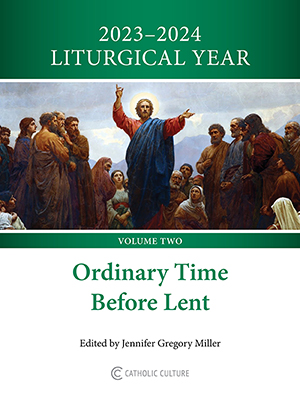Catholic Activity: Popular Customs and Traditions of Maundy Thursday
Father Weiser describes some of the popular traditions from around the world associated with Holy Thursday, including the wooden clapper, and how the bells "fly" to Rome until Easter.
DIRECTIONS
Many popular customs and traditions are connected with Maundy Thursday. There is, above all, the universal children's legend that the bells "fly to Rome" after the Gloria of the Mass. In Germany and central Europe the little ones are told that the church bells make a pilgrimage to the tomb of the apostles, or that they visit the Holy Father (Pope) to be blessed by him, then sleep on the roof of St. Peter's until Holy Saturday morning. In France the story is that the bells fly to Rome to fetch the Easter eggs that they will drop on their return into every house where the children are good and well behaved.
In some Latin countries sugared almonds are eaten by everybody on Maundy Thursday. From this custom it bears the name "Almond Day" in the Azores. In central Europe the name "Green Thursday" inspired a tradition of eating green things. The main meal starts with a soup of green herbs, followed by a bowl of spinach with boiled or fried eggs, and meat with dishes of various green salads.
Following the ecclesiastical custom, the bells on farm buildings are silent in Germany and Austria, and dinner calls are made with wooden clappers. In rural sections of Austria boys with clappers go through the villages and towns, announcing the hours (since the church clock is stopped). These youngsters (Ratschenbuben) sing a different stanza each hour, in which they commemorate the events of Christ's Passion. Here is the traditional text of such a song, for nine o'clock at night on Holy Thursday:
We beg you, people, hear and hark!
It's nine o'clock, and fully dark.
O, think of the pain which Christ has felt,
When, praying for us, in the garden He knelt.
In agony fretting, Blood and water sweating,
He suffers in darkness Who is our Light:
Remember it, folks, at nine o'clock night!
Activity Source: Easter Book, The by Francis X. Weiser, S.J., Harcourt, Brace and Company, New York, 1954







